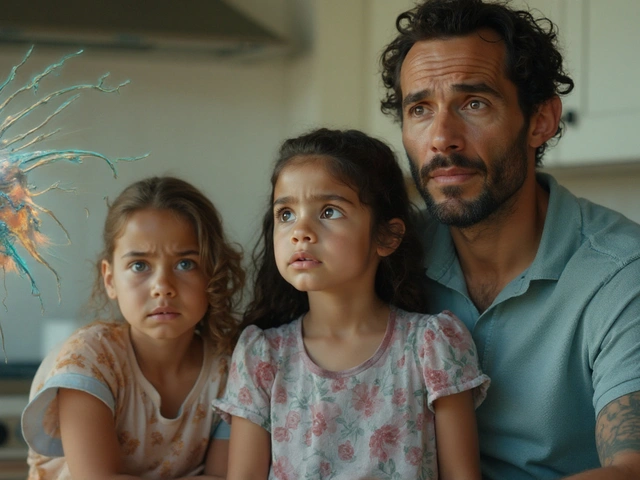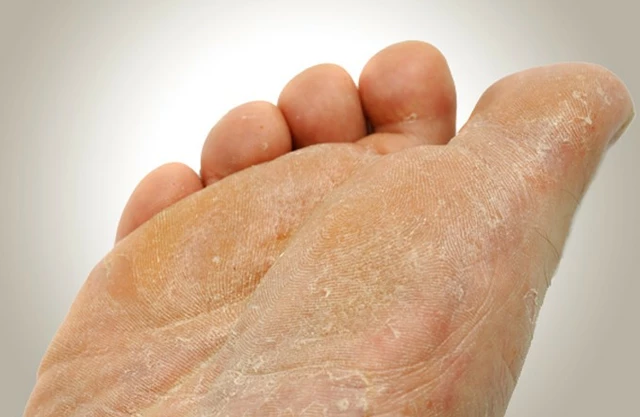Amoeba infections are diseases caused by free‑living amoebae that invade human tissue. These infections range from deadly brain inflammation to painful eye disease, affecting people of all ages worldwide.
Why a single case feels like a tragedy
When 12‑year‑old Maya in Queensland returned from a school camp and soon complained of a severe headache, nobody imagined a microscopic predator was lurking in the warm lake water she swam in. Within days she developed seizures, and doctors diagnosed primary amebic meningoencephalitis (PAM). Despite aggressive therapy, Maya passed away, leaving a community grappling with a disease most had never heard of.
Stories like Maya’s are echoed in Kathmandu, where a contact‑lens wearer developed a painful corneal ulcer that blinded her within weeks. In Brazil, a farmer’s slow‑progressing dementia was later linked to a rare brain infection caused by a different amoeba. These narratives illustrate that amoeba infections are not abstract statistics - they are personal, devastating, and often preventable.
The culprits: free‑living amoebae
Three genera account for the overwhelming majority of human disease:
- Naegleria fowleri is a thermophilic amoeba that thrives in warm freshwater. It can enter the nose during swimming and travel to the brain, causing PAM, which carries a mortality rate above 95%.
- Acanthamoeba spp. are ubiquitous in soil and tap water. They most often cause Acanthamoeba keratitis, an eye infection linked to contact‑lens hygiene, but can also produce granulomatous amebic encephalitis (GAE) in immunocompromised patients.
- Balamuthia mandrillaris lives in dust and soil. When it gains entry through skin lesions or inhalation, it can cause a chronic form of GAE with a mortality around 90%.
How the infections happen
Each amoeba has a preferred route of entry:
- Naegleria fowleri - water forced up the nasal passages during activities like diving or water‑polo.
- Acanthamoeba spp. - contaminated contact‑lens solution, eye trauma, or poor lens hygiene.
- Balamuthia mandrillaris - inhalation of dust particles or direct skin contact with contaminated soil.
Climate change is lengthening the warm‑water season, expanding the geographic range where World Health Organization (WHO) now flags these pathogens as emerging threats.
Clinical faces of the disease
Primary amebic meningoencephalitis (PAM) presents like bacterial meningitis - fever, headache, vomiting, and rapid neurological decline. Diagnosis is often missed until a brain tissue sample reveals motile trophozoites.
Granulomatous amebic encephalitis (GAE) is slower, masquerading as tuberculosis or fungal meningitis, with weeks to months of progressive confusion, seizures, or focal deficits.
Acanthamoeba keratitis starts with eye pain, redness, and blurred vision, progressing to a ring‑shaped corneal ulcer. Without prompt treatment, permanent vision loss follows.
Why diagnosis is a hurdle
Standard laboratory cultures are slow, and many clinicians lack familiarity. Molecular tools, especially polymerase chain reaction (PCR) assays, have cut detection time to hours, but they remain unavailable in many low‑resource settings.
The Centers for Disease Control and Prevention (CDC) recommends sending cerebrospinal fluid samples to reference labs when amoebic infection is suspected, yet logistical barriers cause delays.

Treatment options and the glaring gaps
There is no single cure. Current regimens combine several drugs:
- Amphotericin B - a potent antifungal that also attacks amoebae but is nephrotoxic.
- Miltefosine - originally an anti‑cancer agent, now the only drug with documented activity against all three free‑living amoebae, though supply shortages are common.
- Azithromycin, fluconazole, and rifampin - used as adjuncts.
The lack of randomized trials means clinicians rely on case reports, leading to inconsistent outcomes. New drug pipelines are sparse; research funding is dwarfed by that for malaria or TB.
Public health response: surveillance, prevention, and policy
Both World Health Organization and Centers for Disease Control and Prevention maintain case registries, but under‑reporting is likely. Surveillance hinges on clinician awareness, laboratory capacity, and rapid reporting channels.
Prevention is deceptively simple:
- Avoid submerging the head in warm freshwater during high‑temperature months.
- Use sterile saline for contact‑lens rinse and never top‑up solutions.
- Wear protective gloves when handling soil or dust, especially for immunocompromised individuals.
Policy makers in Australia, the US, and emerging economies are drafting guidelines for water‑park maintenance, public swimming‑area signage, and mandatory reporting of amoebic cases.
Comparison of the three main free‑living amoebae
| Feature | Naegleria fowleri | Acanthamoeba spp. | Balamuthia mandrillaris |
|---|---|---|---|
| Typical infection | Primary amebic meningoencephalitis (PAM) | Acanthamoeba keratitis; GAE | Granulomatous amebic encephalitis (GAE) |
| Mortality rate | ≈95% | ≈10% (keratitis) / 70% (GAE) | ≈90% |
| Primary route | Water forced up nose | Contaminated contact‑lens solution or ocular trauma | Inhalation of dust / skin lesions |
| Preferred treatment | Amphotericin B + miltefosine | Miltefosine + azithromycin + topical agents | Amphotericin B + miltefosine + fluconazole |
Connected topics you might explore next
Understanding amoeba infections opens doors to broader discussions about emerging water‑borne diseases, the impact of climate‑driven temperature shifts on pathogen distribution, and how low‑resource health systems can build resilient diagnostic networks. Readers interested in the policy side can look into water safety standards, while those curious about the lab side might dive into next‑generation sequencing for pathogen detection.
Frequently Asked Questions
What makes free‑living amoebae different from other parasites?
Free‑living amoebae do not need a host to survive; they live in soil, fresh water, and even treated tap water. This environmental versatility lets them appear in places most people wouldn’t expect, increasing the chance of accidental human exposure.
How quickly does primary amebic meningoencephalitis progress?
PAM typically evolves within 2‑5 days after exposure. Initial symptoms mimic meningitis, but patients deteriorate rapidly, often reaching coma within a week if treatment is delayed.
Can Acanthamoeba keratitis be prevented for contact‑lens wearers?
Yes. Using only sterile commercial solutions, never rinsing lenses with tap water, and discarding lenses on schedule cut the risk dramatically. Regular lens case replacement and hand hygiene are also essential.
Why are mortality rates so high for these infections?
Late diagnosis, limited effective drugs, and the aggressive nature of brain‑invading amoebae all contribute. By the time symptoms appear, the pathogen often has caused irreversible damage, and the few drugs that work are toxic and hard to access.
Is climate change really influencing amoeba infection rates?
Warmer water extends the breeding season for Naegleria fowleri and expands habitats for other free‑living amoebae. Studies from the United States and Europe show a northward shift in reported cases correlating with rising average temperatures.






Shivaraj Karigoudar
September 24, 2025 AT 16:29Thank you all for bringing such a crucial subject to the fore and for the shared experiences that illuminate the human toll of these insidious pathogens.
First, let us acknowledge the epidemiological landscape, which is rapidly evolving due to climate‑driven hydrological shifts.
The increasing thermophilic niches for Naegleria fowteri have been documented across continents, underscoring a need for trans‑regional surveillance networks.
From a pathogenetic standpoint, the trophozoite forms exhibit a formidable capacity to breach the blood‑brain barrier, owing to their proteolytic arsenal and amoeboid motility.
Consequently, the therapeutic index of presently available agents such as amphotericin B is severely compromised by nephrotoxicity.
Miltefosine, originally an anti‑cancer scaffold, has shown promise across the three genera, yet supply chain fragilities limit its accessibility.
In low‑resource settings, reliance on microscopy remains a barrier, while PCR‑based diagnostics offer a rapid, albeit costly, alternative.
We must also consider the sociocultural dimensions; public health messaging about safe swimming practices often clashes with local recreational customs.
Community engagement programmes should therefore be co‑designed with indigenous stakeholders to ensure cultural relevance.
Furthermore, the role of contact‑lens hygiene cannot be overstated – even a minor lapse in sterilisation protocols can precipitate fulminant keratitis.
Our labs need standardized protocols to differentiate Acanthamoeba spp. from other microbial contaminants, reducing false‑positive rates.
Education campaigns targeting ophthalmologists and optometrists could dramatically lower incidence rates in high‑risk populations.
On the policy front, mandatory reporting of amoebic infections should be integrated into existing notifiable disease frameworks.
Funding agencies must recalibrate research portfolios to address these emerging threats, moving beyond the traditional focus on malaria and TB.
Finally, interdisciplinary collaboration among neurologists, infectious disease specialists, and environmental scientists will be pivotal in curbing the mortality associated with these infections.
Bruce Heintz
September 29, 2025 AT 02:02Great summary! 😊 This really highlights how simple preventive steps can save lives. Keep spreading the word! 👍
richard king
October 3, 2025 AT 11:36The abyss of microscopic existence mirrors the abyss of our collective ignorance, where every droplet of warm water becomes a portal to oblivion.
We stand at the crossroads of curiosity and catastrophe, poised to either embrace knowledge or be swallowed by unseen leviathans.
Let us not dismiss these amoebae as mere curiosities; they are philosophers of death, teaching us humility.
Grace Shaw
October 7, 2025 AT 21:09Esteemed colleagues, the gravity of the situation warrants a meticulous examination of both clinical and environmental vectors.
It is incumbent upon us to disseminate evidence‑based protocols that encompass prophylactic measures, prompt diagnostic algorithms, and evidence‑oriented therapeutic regimens.
In doing so, we uphold the tenets of medical professionalism and public health stewardship.
Sean Powell
October 12, 2025 AT 06:42yo guys check out the water safety tips dont skip the saline rinse for lenses it saves vision
Henry Clay
October 16, 2025 AT 16:16People need to stop being careless 😒
Isha Khullar
October 21, 2025 AT 01:49It is a moral imperative to confront this invisible menace with unwavering resolve, lest we betray the very fabric of humanity that demands compassion for the afflicted.
Lila Tyas
October 25, 2025 AT 11:22Hey everyone! 🌟 Remember, a quick rinse of your lenses can keep your eyes sparkling and infection‑free. You’ve got this!
Mark Szwarc
October 29, 2025 AT 20:56Just a quick note on terminology: the correct term is "primary amebic meningoencephalitis" (PAM), not "primary amoebic…" Also, when referencing treatment, be sure to list amphotericin B before miltefosine to reflect standard protocol hierarchy.
BLAKE LUND
November 3, 2025 AT 06:29Thanks for the clarification! It’s helpful to keep the nomenclature precise, especially for new learners.
Veronica Rodriguez
November 7, 2025 AT 16:02For anyone seeking quick resources, the CDC’s amoeba page offers downloadable case‑report forms and diagnostic flowcharts. 📄💡
Holly Hayes
November 12, 2025 AT 01:36Wow, the CDC page is so… mainstream. I prefer digging into primary literature for nuance.
Julia Phillips
November 16, 2025 AT 11:09It shatters your heart to hear young Maya’s story, a tragic echo that reverberates through every community touched by these silent predators.
We must honor her memory by amplifying awareness and fortifying prevention.
Richa Punyani
November 20, 2025 AT 20:42Your words resonate deeply; let us channel this collective grief into actionable initiatives, such as school‑based water safety workshops.
Bhupendra Darji
November 25, 2025 AT 06:16I think a joint effort between local health departments and community leaders could streamline reporting mechanisms and improve early detection.
Paula Hines
November 29, 2025 AT 15:49While collaboration is admirable, we must also recognize the geopolitical implications of resource allocation; our nation must prioritize its own citizens first.
Rashi Shetty
December 4, 2025 AT 01:22Indeed, the urgency cannot be overstated. Let’s unite our efforts! 🌍🚀
Queen Flipcharts
December 8, 2025 AT 10:56Union of efforts is commendable, yet it must be guided by rigorous scientific standards to avoid diluting excellence.
Yojana Geete
December 12, 2025 AT 20:29In the grand theater of microbial warfare, every drop of water becomes a stage, and we, the actors, must learn our lines before the curtain falls.